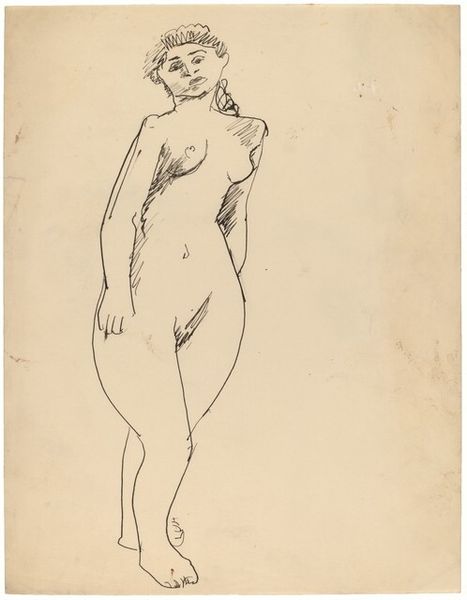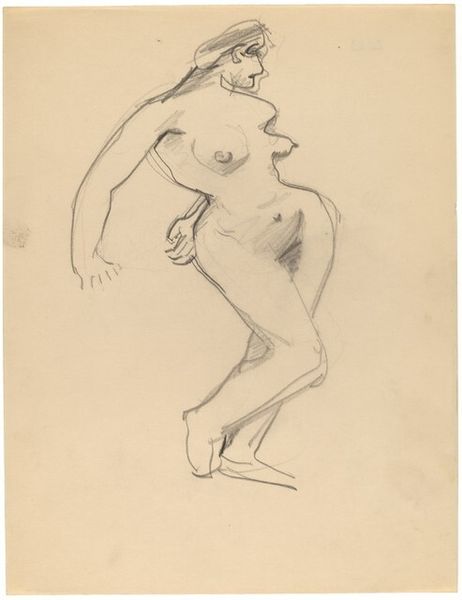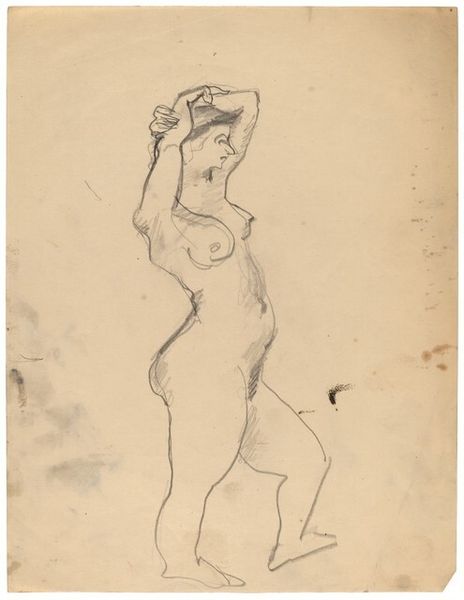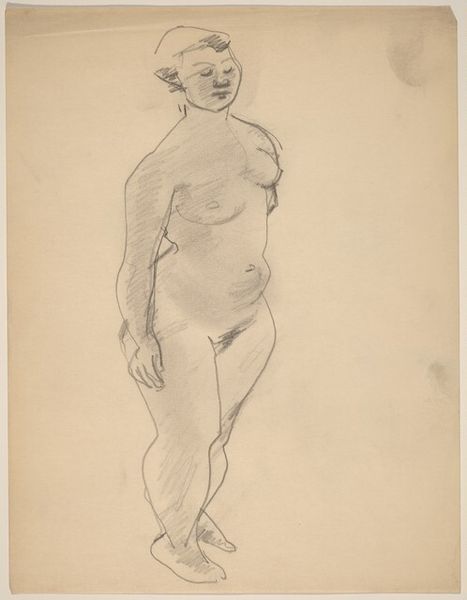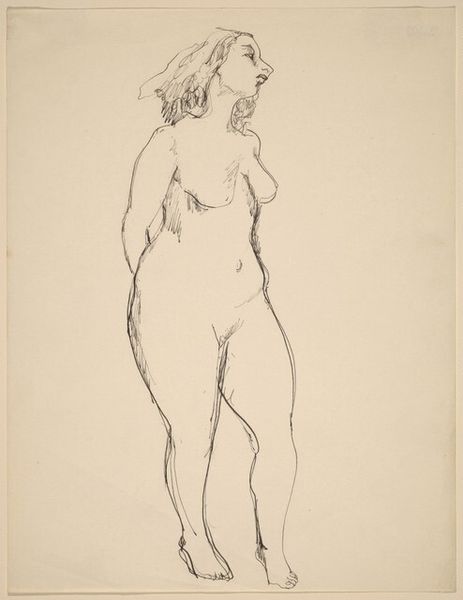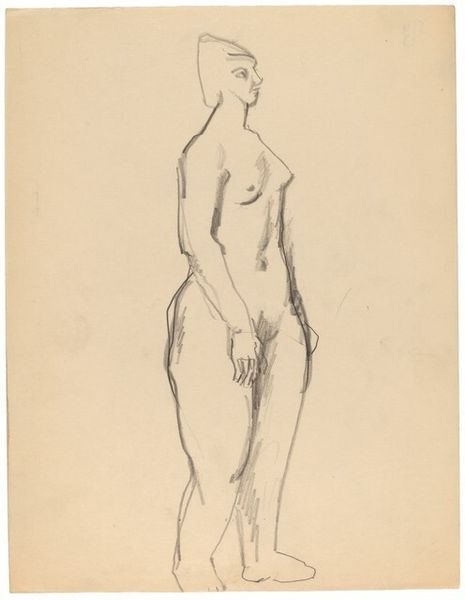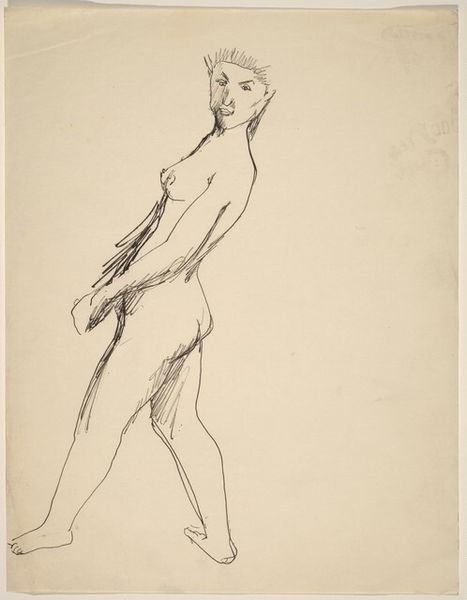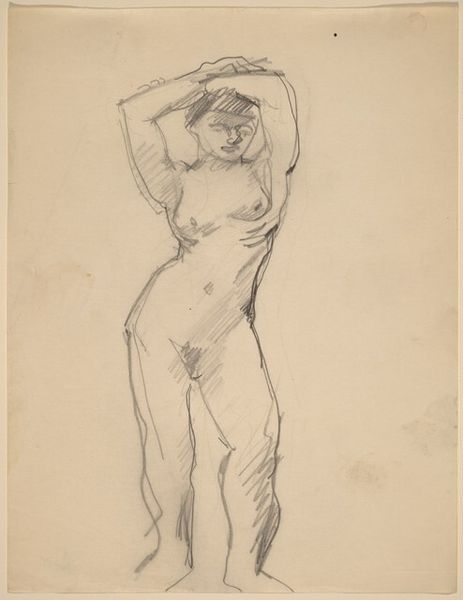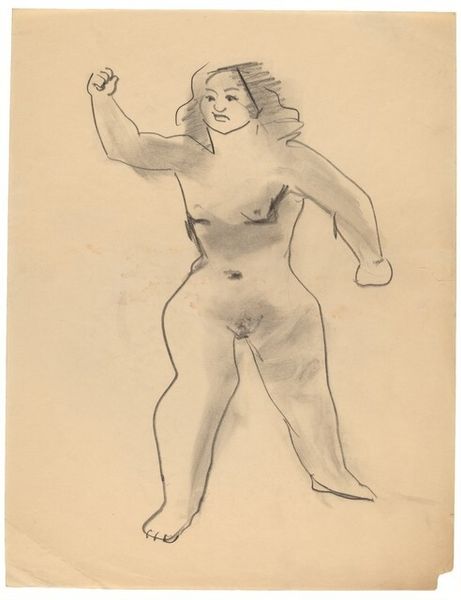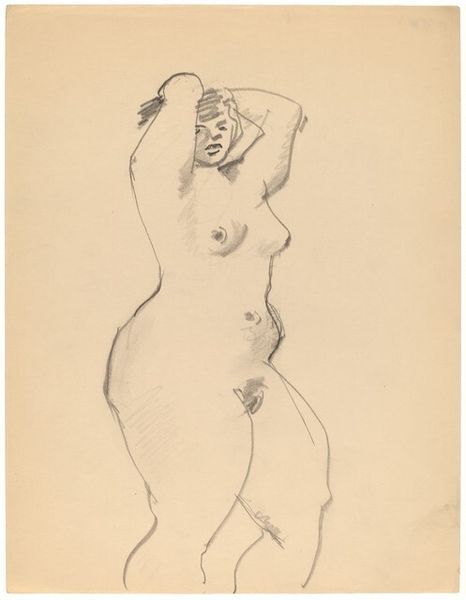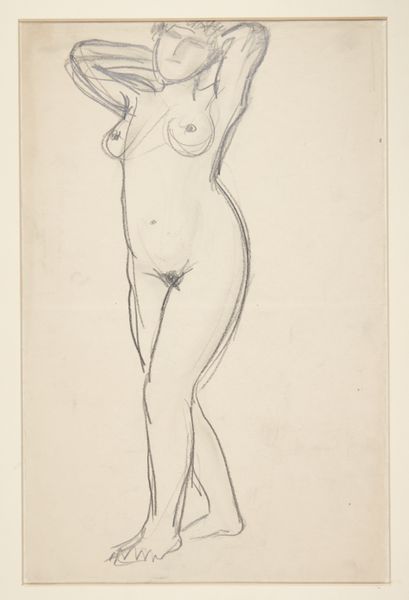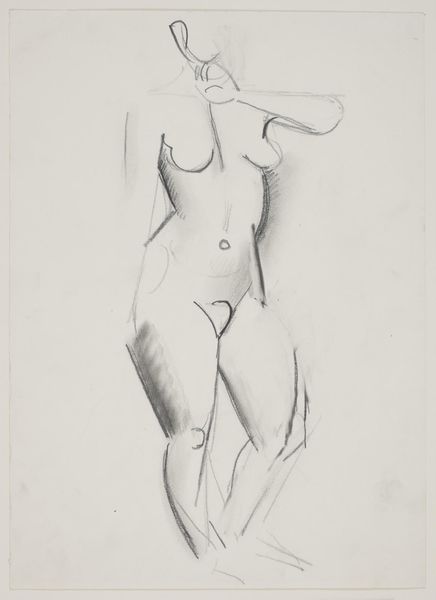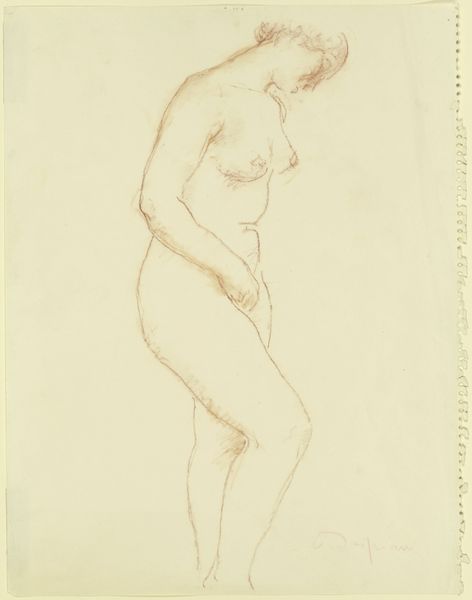
drawing, pencil
#
drawing
#
pencil sketch
#
figuration
#
pencil
#
portrait drawing
#
nude
Copyright: National Gallery of Art: CC0 1.0
Curator: Here we have "Standing Female Nude Facing Right" by Mark Rothko. It's a pencil drawing. What are your initial thoughts? Editor: Well, I am immediately drawn to the figure's confident pose—her hands on her hips. There’s a casualness in the drawing, but also an inherent strength. The sketchwork itself feels quite immediate and raw, focusing primarily on form rather than detail. Curator: Rothko, who's much better known for his abstract expressionist paintings, did quite a few figurative drawings early in his career. These works often engaged with social realism, and some scholars see them as critiques of prevailing cultural standards surrounding the female form. Editor: It's interesting to see Rothko, someone synonymous with abstraction, grappling with representation here. You can see an underlying understanding of anatomy and volume despite the simplicity of the lines. The shading seems strategic, defining the weight and balance of the figure. Curator: Precisely. Think of the sociopolitical environment of the 1930s and 40s in America. These nudes by Rothko could be a response to the commercialized and often objectified images of women. The woman in this image seems assertive rather than passively idealized. Editor: I notice the rough edges of the paper, almost torn in places. It adds to the immediacy, the feeling that we're seeing something candid and unfinished, which complicates any easy reading of idealized beauty or social commentary. It adds another layer to its textural language. Curator: Absolutely. These early works allowed artists to position themselves within various political and artistic dialogues, contributing to a larger conversation about representation and identity, which would later influence the artistic trajectory of Rothko. Editor: So, we see this drawing, on one hand, a study in form, with lines creating depth and shape and, on the other hand, a positioning of the subject in direct opposition to classical form, resulting in the social construct of contemporary American identity in pre-abstract art. Fascinating! Curator: Indeed, it encourages a look into Rothko’s early artistic explorations as we view both figure and ground, both Rothko’s early influences as well as the world in which this figure was situated.
Comments
No comments
Be the first to comment and join the conversation on the ultimate creative platform.
